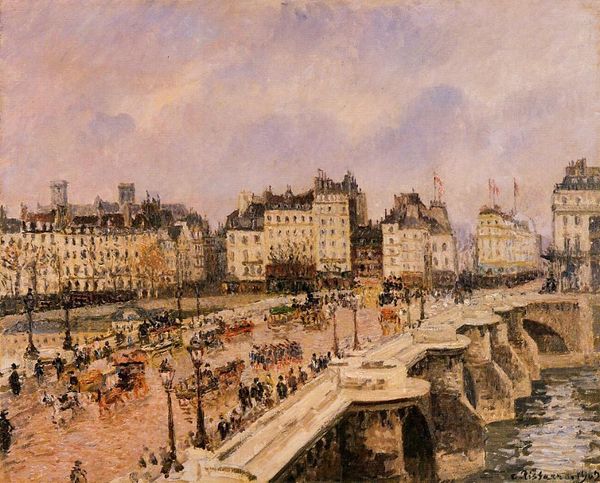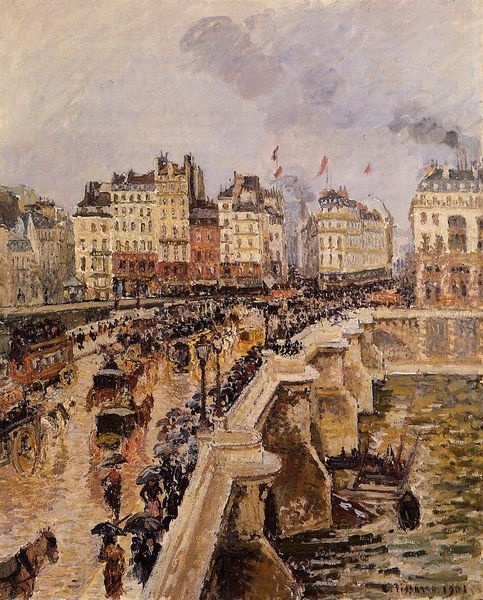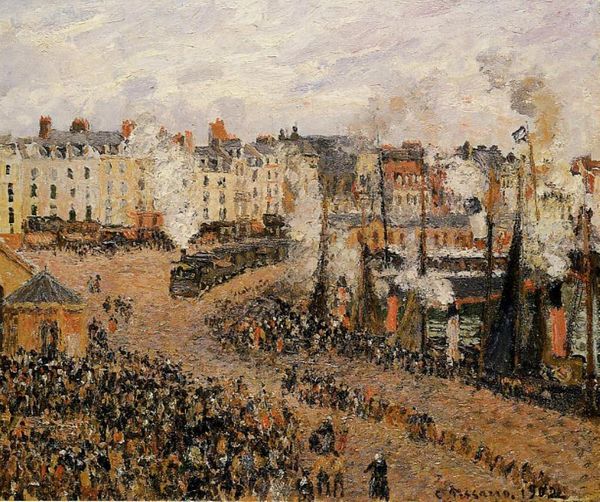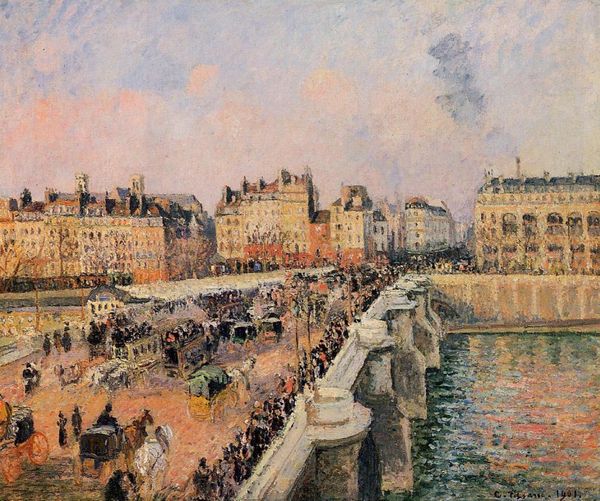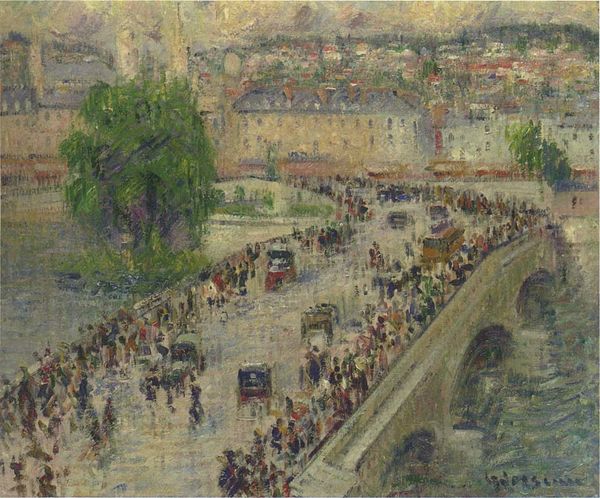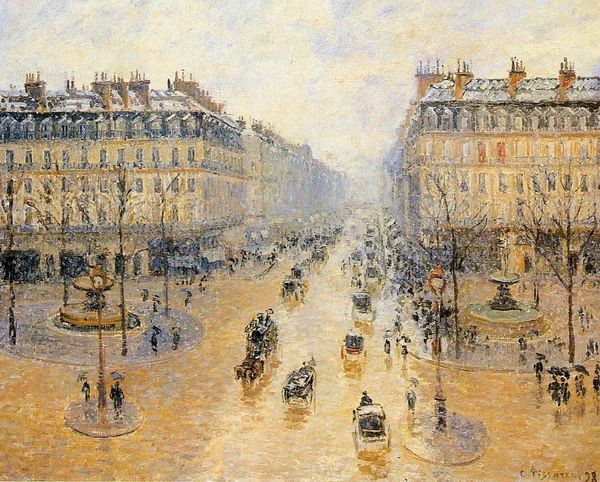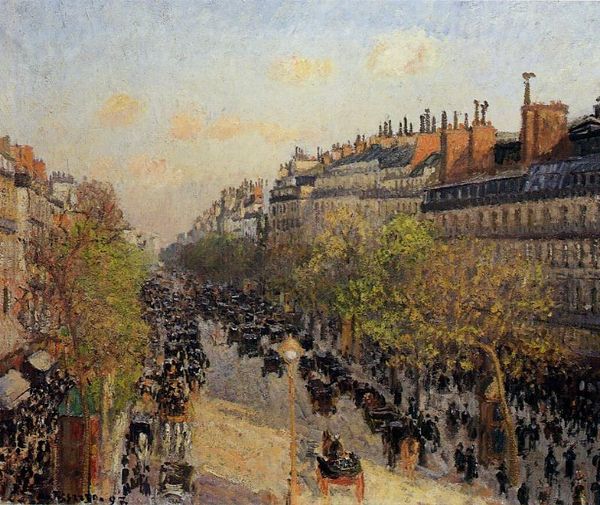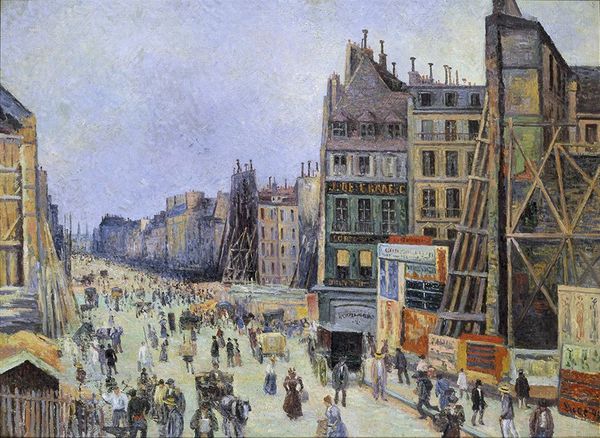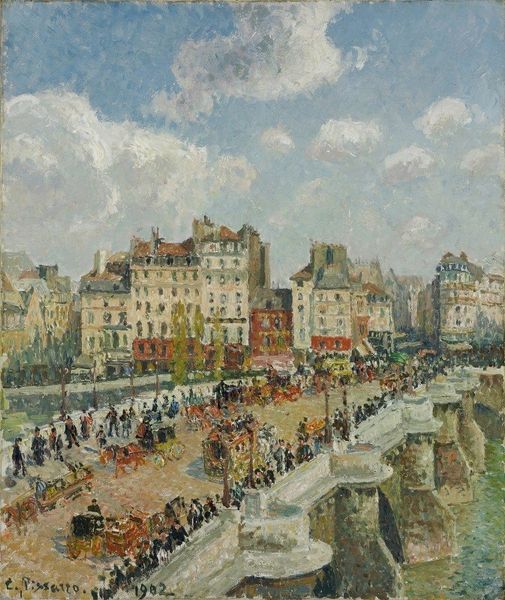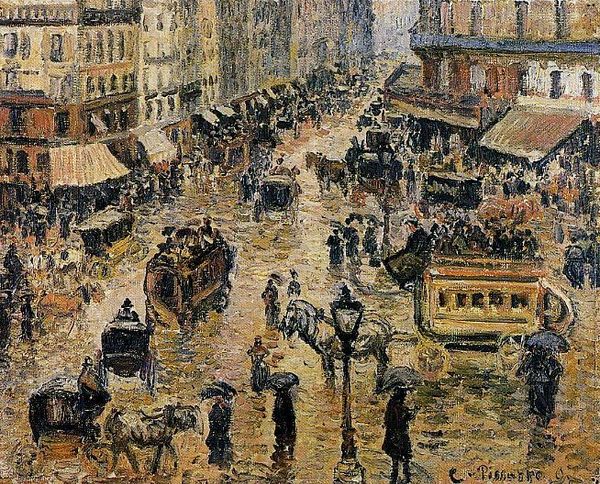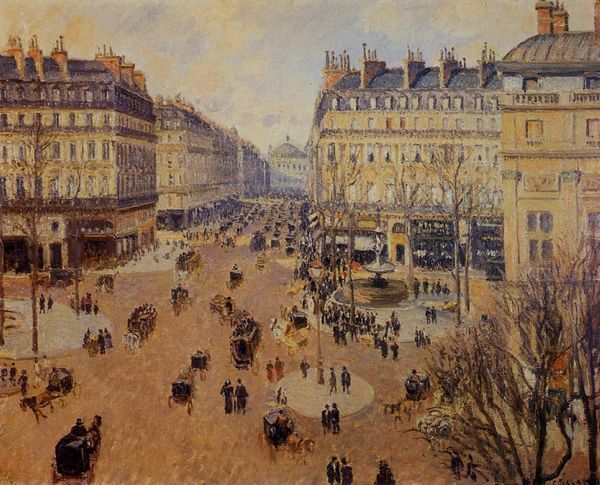
#
abstract painting
#
holy-places
#
charcoal drawing
#
impressionist landscape
#
possibly oil pastel
#
oil painting
#
acrylic on canvas
#
underpainting
#
seascape
#
painting painterly
#
watercolor
Copyright: Public domain
Editor: Here we have Camille Pissarro's "Pont Neuf Fog" from 1902, a painting capturing a street scene. The atmosphere feels muted and hazy to me. What visual echoes do you see in this painting, and what cultural weight might it carry? Curator: The fog is indeed crucial. It veils and softens, turning solid structures into ghostly suggestions. Consider how fog is often used symbolically. What does fog conceal, and what might Pissarro be hinting at by obscuring the Pont Neuf? Editor: Perhaps it's about the transient nature of city life, the constant flux that obscures lasting impressions? Curator: Exactly. And look at the bridge itself. Bridges are powerful symbols—connectors, passages between worlds. In mythology and art, they often represent a transition, a crossing of boundaries. Here, though, it's veiled. Is the transition clear, or somehow obscured? Editor: So, the fog and the bridge, both potent symbols, are working together to create a sense of ambiguity, of something just out of reach. Curator: Precisely. Think about the historical context too. Paris at the turn of the century was a hotbed of change. New technologies, social upheavals... The fog, then, could be a metaphor for the uncertainty of that era, the feeling of being adrift in a rapidly changing world. The Impressionists were grappling with that changing landscape and new ways of seeing. Editor: It's amazing how Pissarro uses something as simple as fog to layer so many levels of meaning into the painting. The painting seems like a visual poem, now. Curator: It’s a wonderful reminder that even everyday images carry cultural weight, echoes of history, memory and the psyche. It pushes us to think deeper.
Comments
No comments
Be the first to comment and join the conversation on the ultimate creative platform.

